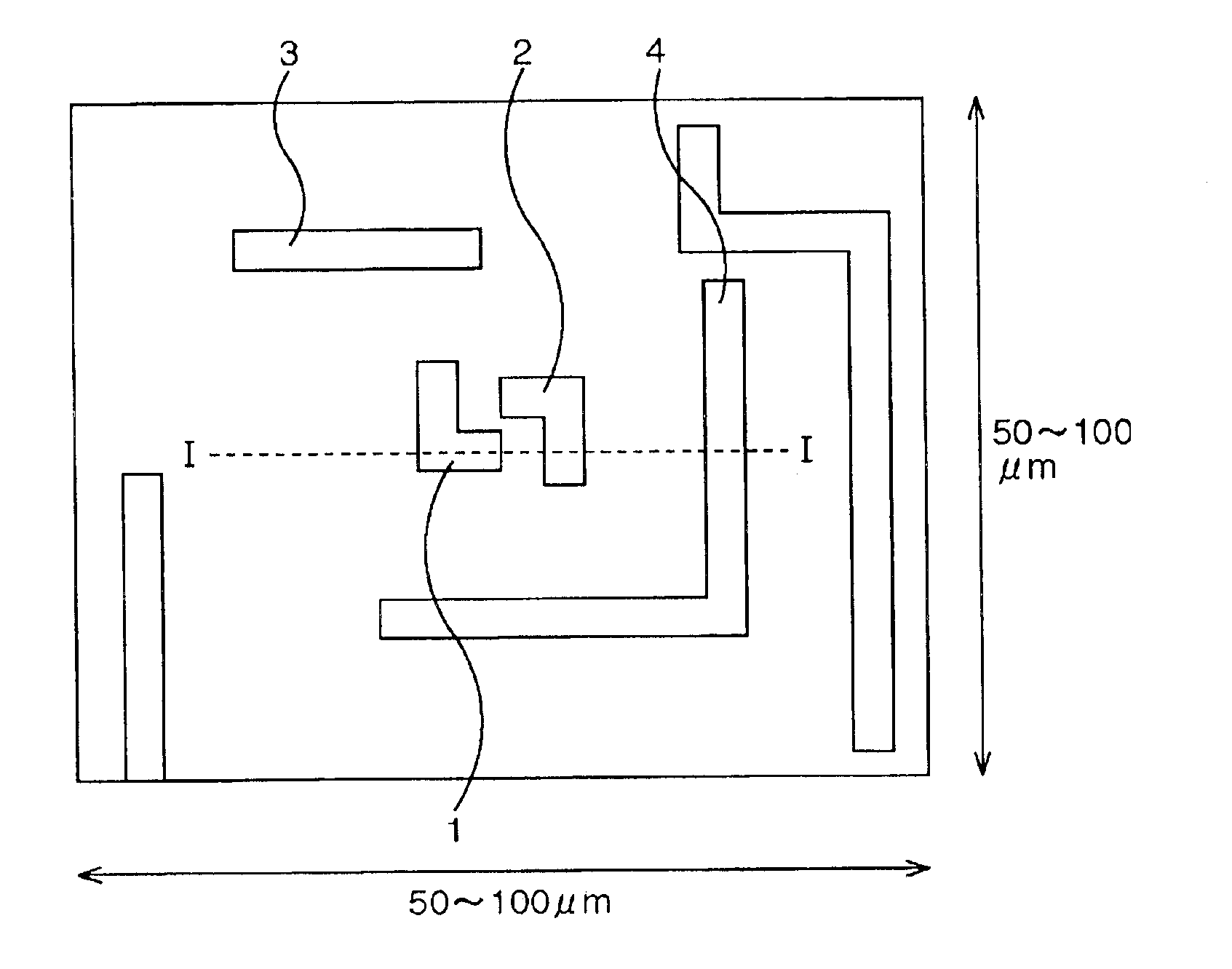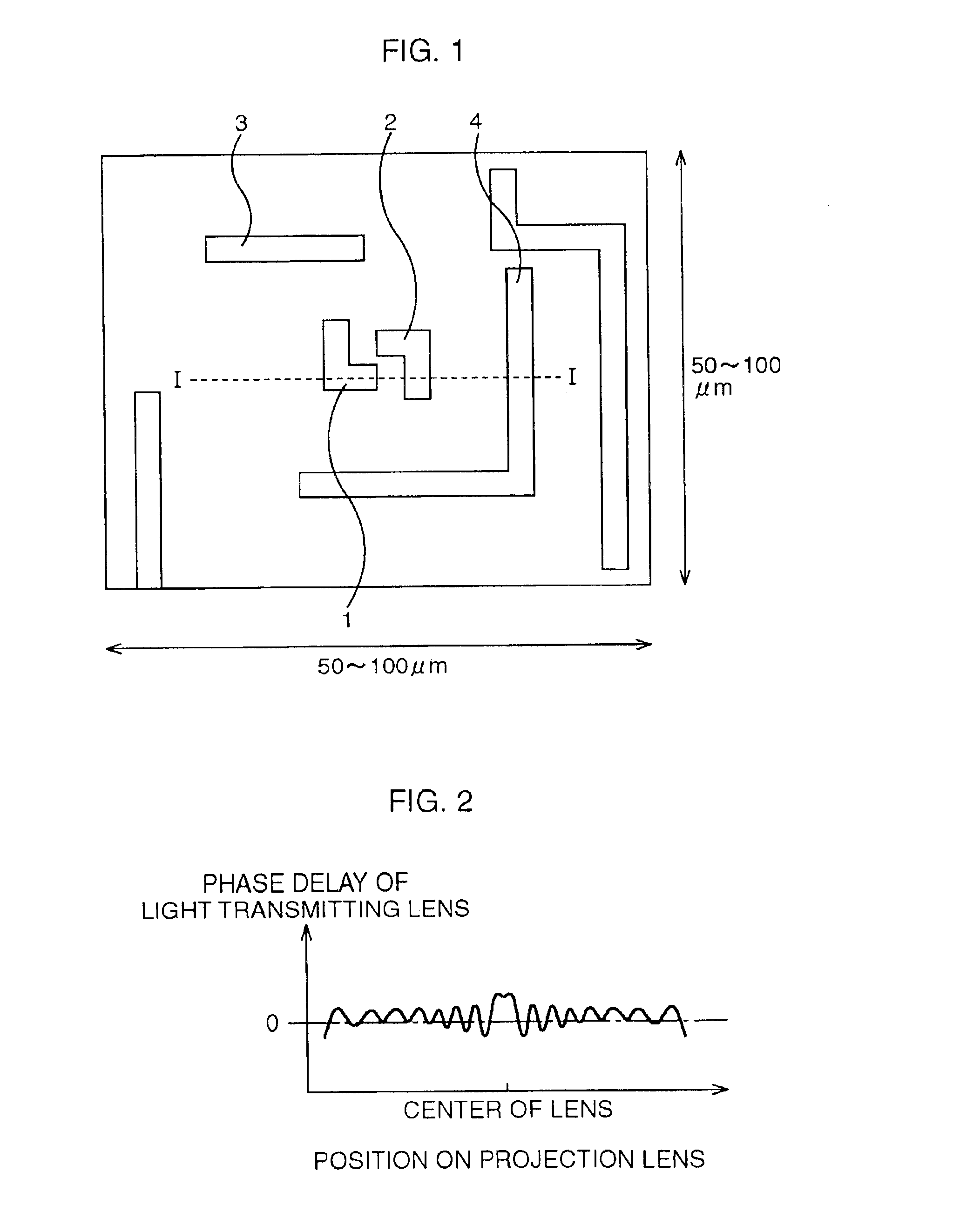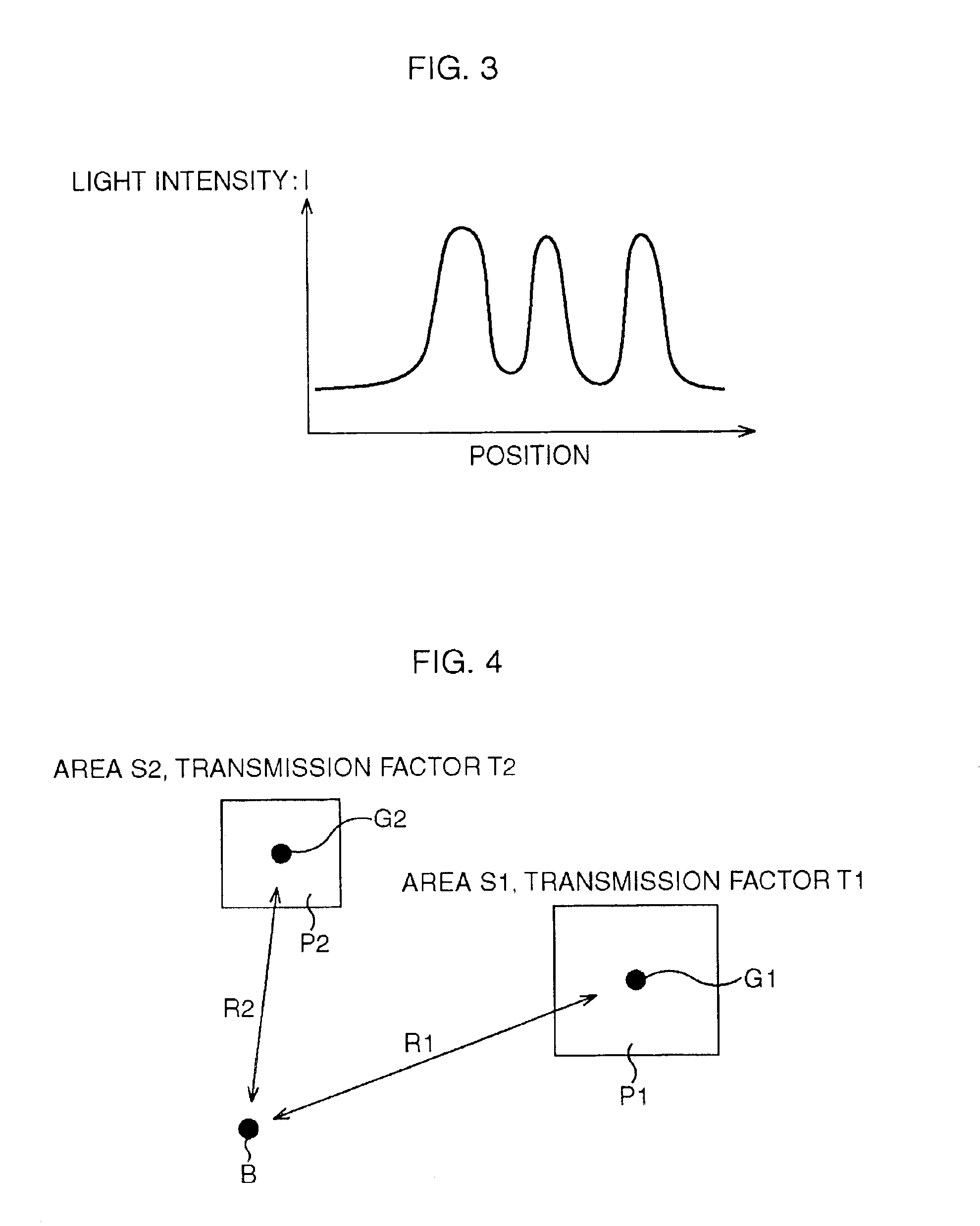Light intensity simulation method, program product, and designing method of photomask
a technology of light intensity simulation and program product, applied in the field light intensity simulation program product, and photomask design method, can solve the problems of local flare, non-conventional establishment of light intensity simulation method taking into account local flare influence, and phenomenon called. achieve the effect of high accuracy
- Summary
- Abstract
- Description
- Claims
- Application Information
AI Technical Summary
Benefits of technology
Problems solved by technology
Method used
Image
Examples
first embodiment
First, a light intensity simulation method according to a first embodiment of the present invention will be explained. FIG. 1 is a schematic view showing the light intensity simulation method according to the first embodiment of the present invention with respect to a photomask shown in FIG. 17.
According to this embodiment, when an exposure wavelength is 0.193 μm, a rectangular area whose side length is about 50 to 100 μm is made to be a unit of calculation in order to take influence of local flare into consideration, as shown in FIG. 1. This is because the influence of the local flare by a pattern in a mask is within the limit of about 50 μm from the pattern. As described above, according to the conventional method, the rectangular area whose side length is about 2 to 10 μm is made to be the unit of calculation, and hence it is impossible to take the influence of the local flare into account sufficiently.
According to this embodiment, an aberration of a projection lens is approximat...
second embodiment
Next, a light intensity simulation method according to a second embodiment of the present invention will be explained. According to the second embodiment, the influence of the local flare is estimated based on a shape of a photomask, not on the aberration of the lens. FIG. 4 is a schematic view showing a principle of the light intensity simulation method according to the second embodiment of the present invention.
In a photomask shown in FIG. 4, it is supposed that only opening patterns P1 and P2 are formed. Further, it is supposed that an area and a transmission factor of the opening pattern P1 are S1 and T1, respectively, and an area and a transmission factor of the opening pattern P2 are S2 and T2, respectively. According to this embodiment, as shown in FIG. 4, the light intensity at a light intensity calculation point B on the photomask is found approximately based on a distance R1 from a barycenter G1 of the opening pattern P1, a distance R2 from a barycenter G2 of the opening p...
third embodiment
Next, a light intensity simulation method according to a third embodiment of the present invention will be explained. According to the third embodiment as well, the influence of the local flare is estimated based on a shape of a photomask, not on the aberration of the lens. However, an estimation method is different from that of the second embodiment. FIG. 8 is a schematic view showing a principle of the light intensity simulation method according to the third embodiment of the present invention.
In a photomask shown in FIG. 8, it is supposed that only opening patterns Q1 to Q3 are formed. According to this embodiment, a pattern occupying factor ρC, as expressed by the following expression 3, is defined with respect to a light intensity calculation point C on the photomask.
ρC=(ΣTn) / (Wx×Wy) Expression 3
Here, Tn is an area of a part of an opening pattern Qn existing inside a rectangular region 5 whose length in an x direction on the photomask is Wx and whose length in a y direction on...
PUM
| Property | Measurement | Unit |
|---|---|---|
| side length | aaaaa | aaaaa |
| length | aaaaa | aaaaa |
| length | aaaaa | aaaaa |
Abstract
Description
Claims
Application Information
 Login to View More
Login to View More - R&D
- Intellectual Property
- Life Sciences
- Materials
- Tech Scout
- Unparalleled Data Quality
- Higher Quality Content
- 60% Fewer Hallucinations
Browse by: Latest US Patents, China's latest patents, Technical Efficacy Thesaurus, Application Domain, Technology Topic, Popular Technical Reports.
© 2025 PatSnap. All rights reserved.Legal|Privacy policy|Modern Slavery Act Transparency Statement|Sitemap|About US| Contact US: help@patsnap.com



